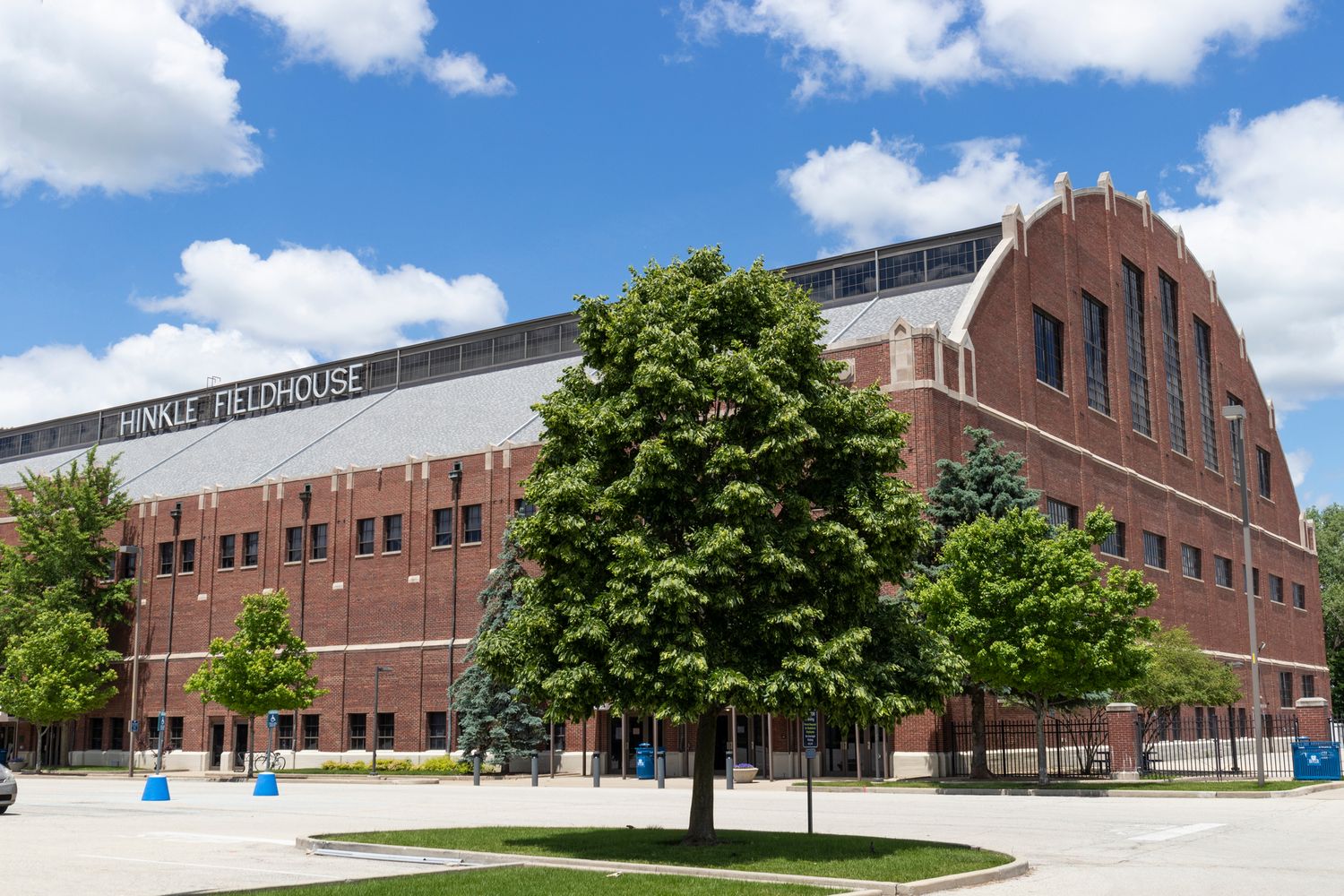Can you feel the excitement? March Madness 2021 is upon us, and the entire state of Indiana is alive with excitement — especially in and around Indianapolis, where most of the games are being played.
Hinkle Fieldhouse, on the campus of Butler University, will be the proud host of six games between March 19 and March 28, including half of the Sweet Sixteen. Unfortunately, COVID-19 protocols are limiting the seating to just 25% of capacity for all stadiums, so only about 2,275 lucky fans will actually be courtside during matches.
That’s no reason, however, not to bask in wonder at the glories of Hinkle Fieldhouse and what it means to the sport of basketball — and basketball fans — everywhere.
Hinkle Fieldhouse: The Shining Jewel in Basketball’s Crown
The 93-year-old historic facility has seen some major renovations over the years, including a $36 million overhaul in 2014 that added wider concourses, elevators and other ADA-accessible features, along with updated seating and expanded concession areas. The building’s massive exterior was also heavily renovated to modernize the utilities and replace the old window panes (all 9,700 of them) with new, energy-efficient glass.
That was the first major overhaul of the Fieldhouse since 1989, done more than 60 years after its initial construction. During that time, the Fieldhouse got new chair-back seats in the lower arena, a VIP lounge, better parking and some additional space for a weight room, administrative offices and the like.
But Hinkle Fieldhouse is, in many ways, exactly what it always was: the epitome of what a college ball arena should be. Then known as Butler Fieldhouse, it was the biggest basketball arena in the country, seating 15,000 fans. While renovations added to the utility of the space and creature comforts, they also eventually reduced the seating capacity to 9,100 — but the Fieldhouse has lost none of its splendor or glory.
Its basic design, by celebrated Indy architect Fermor Spencer Cannon, has endured throughout the decades. Unlike other sports arenas of its time that relied on posts and pillars for support, the Fieldhouse was designed using a steel truss system that gave every spectator an unobstructed view of the court. That design set the standard for many basketball arenas that would come later.
The arena’s enduring nature is why it was added to the National Register of Historic Places in 1983 and named a National Historic Landmark in 1987. The fieldhouse was even featured in the 1986 film Hoosiers, which drew inspiration from a real-life basketball title game in 1954 where the underdogs from tiny Milan High School defeated the much-larger favorites from Muncie Central High School.
Is it any wonder that the Fieldhouse is often referred to as “Indiana’s Basketball Cathedral”?
How Butler Fieldhouse Became Hinkle Fieldhouse and Basketballs Turned Orange
While Butler Fieldhouse was the brain-child of 41 far-sighted Indianapolis businessmen who saw the nation’s growing obsession with college basketball, it has long been home for state high school basketball tournaments, football games and baseball, as well.
Arguably one of the most legendary figures associated with Butler Fieldhouse — and basketball in general — was none other than Paul David “Tony” Hinkle.
Born in Logansport, Indiana, Tony Hinkle had a distinctive career in college basketball at the University of Chicago, but his real strengths started to shine when he joined Butler University in 1921 where he would teach, coach and serve as the athletic administrator for nearly 50 years.
It was there that he came up with the “Hinkle System” of offensive strategy, which turned his teams into powerhouses that became known as “Big Ten Killers.” Hinkle also played a pivotal part in the introduction of the three-second rule and the end of the jump ball after every basket, ushering the game into its modern configuration.
But Tony Hinkle made one other contribution to basketball as a sport and basketballs, specifically, that’s impossible to overlook: He’s the main reason that basketballs are that distinctive orange color we all know and love.
Back in the early days of the sport, basketballs were made of leather. Consequently, they were pretty much plain brown balls — which both players and fans sometimes struggled to see in the quick shifts of a game.
Tony Hinkle led the campaign to create a new ball that would stand out better on the court. Working with Spalding Company in 1957 on the new design (which also added lines to enhance a player’s grip for better shots, passes and dribbles), Hinkle chose orange for its high-visibility.
The new balls made their debut at the 1958 NCAA Finals in Louisville, Kentucky, and were quickly adopted by the NCAA for official use. Spalding Company went on to become the first official competition balls in the world and has been the maker of NBA official balls since 1983.
Butler Fieldhouse was renamed Hinkle Fieldhouse in Tony Hinkle’s honor in 1966 after the longtime coach retired, and so it remains today.
Indiana’s Long Love Affair with College Basketball
So, basically, what we’re saying here is this: If March Madness has a true home anywhere, we think it’s here in Indianapolis — because much of the sport’s history is tied to the area.
So, gather up your best buddies, find a spot to hang where you can watch the game, order some shareable snacks and revel in the knowledge that you’re participating in a piece of unbroken history with deep roots in Indy.


